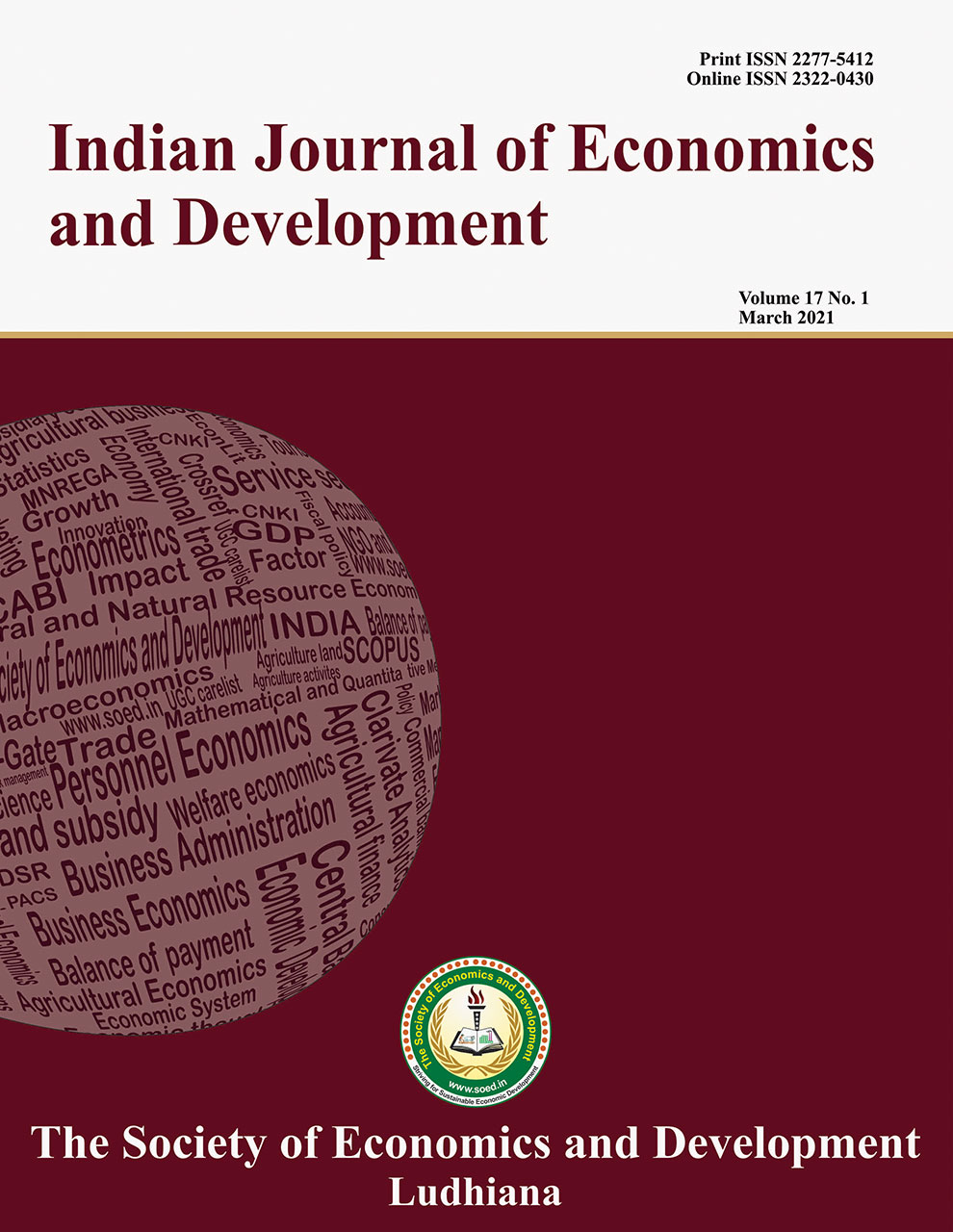India's Rising Import Dependence: An Analysis of its Current Status, Concerns, and Strategies

Price: ₹ 500
Author: Kulwinder Singh , Sarita Sandhu and Ajay Ranga
Author Address: Assistant Professor, University Business School, Research Scholar, Department of Evening Studies, and Associate Professor, University Institute of Legal Studies, Panjab University, Chandigarh-160014 (Chandigarh)
Keywords: Dependence, exports, growth, imports, India, trade.
JEL Codes: F10, F19, F40.
Abstract
India could not reduce its import dependence despite adopting an inward-looking import-substitution development strategy for four decades (1950-51 to 1990-91) and it was on the rise even during the export-promotion regime (since 1991-92). In this context, this paper presented a detailed analysis of India's current import dependence dynamics. Further, its major concerns and way-outs were also outlined for enabling India to achieve the objectives of Atmanirbhar Bharat Abhiyan. The study found that India's imports registered considerably higher growth than its export growth, especially since 1991, by taking advantage of trade liberalisation and rising income levels. The growth of non-oil exports and oil prices partly resulted in a consistent rise in India's import dependence. India's imports were concentrated only on a few commodities and markets; however, some new commodities and markets were added to the import basket. In this view, planned and proactive policy intervention is required to reduce import dependence and become a self-reliant economy.
Description
Indian Journal of Economics and Development
Volume 18 No. 1, 2022, 93-104
DOI: https://doi.org/10.35716/IJED/21201
NAAS Score: 5.15
Indexed in Clarivate Analytics (ESCI) of WoS
Indexed in Scopus
UGC Approved



